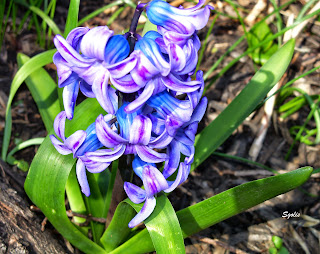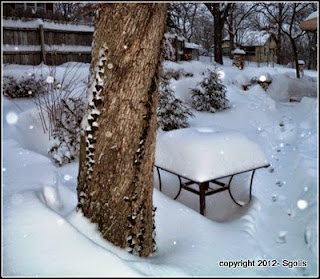Once the specialty cat garden has grown the cats will be attracted to the grasses and catnip The garden is a safe haven that provides cats with all that they need.
Here are photos of the cats that visit my garden. It is a safe space for them.
If you love cats then you should create a special garden for them and they will come to visit you daily.
Where should I plant the cat grass?
Plant the grasses in front of the herbs. Start grass seeds inside, and then transplant them when the grass is about two inches high. On the other hand, you can sow by seed directly in the garden. These grasses provide the cats with vitamins, minerals, and enzymes, which help your cat digest their food, and control hairballs.
 |
| Photo of Lucy with cat house in the garden. She loves her area with natural cypress mulch to keep her area bug free. |
 |
| A stray cat that comes daily to the catnip garden |
Here are photos of the cats that visit my garden. It is a safe space for them.
Questions and Answers
Where should I design a specialty cat garden?
Choose a location for the cat garden that is away from people, pets, and car traffic. Many people choose the furthest corner of their yard with two sides of privacy fencing. If you do not have a privacy fence then you can install a trellis, plant shrubs, or ornamental grass.
What products are needed for cat garden?
What products are needed for cat garden?
Determine what products you will use for the cat garden. You may want to install a water feature, a small pond, a sandbox and cat playhouse, and a feeding station. Leave a section for cat grasses; wheat, barley, and oat also grow catnip and cat herbs in a sunny section of the garden.
How to design a specialty cat garden?
How to design a specialty cat garden?
.
Use white marking paint to outline the cat garden on the ground. Measure your area. These measurements will help you when purchasing gravel, mulch, and assorted seeds for the cat garden.
Draw out your cat garden on paper. Use colored pencils to highlight where each item will be located. The cat garden design will help you when you are setting up the garden. For a medium-sized residential home, a cat garden with the dimensions of 10 x 12 is a good size.
After you have drawn out your garden design and purchased your products you would then get the cat garden ready for planting and set up by clearing the site with a tiller. Remove all rocks and grass. Loosen the soil so that it is a fine texture. Mix a two-inch layer of compost with the garden soil. Make sure that the cat garden has proper water drainage.
Set up the sandbox behind the cat house. Plant rosemary or peppermint herbs a foot away from the litter box to mask the odor. These herbs are fragrant and bushy and tall, thus they will provide the cats with privacy. Install the litter box by digging a hole that is the same size as the litter box. Level the bottom of the hole. Set the box in a hole and fill it with fine sand. Line the litter box rim with a stone border and surround the litter box with 3-inches of pea gravel.
Add the water feature in the center of the cat garden. The water feature will add interest to the garden and all cats enjoy listening to the cascading water. They also enjoy getting their paws wet.
What herbs should I buy for the cat garden?
What herbs should I buy for the cat garden?
Buy cat herbs. These herbs are beneficial to cats; rosemary, catnip, cat thyme, Valerian, peppermint, and dandelion. You may want to plant herbs in containers to add interest to the cat garden or plant them in various sections of the garden.
Where should I plant the cat grass?
Plant the grasses in front of the herbs. Start grass seeds inside, and then transplant them when the grass is about two inches high. On the other hand, you can sow by seed directly in the garden. These grasses provide the cats with vitamins, minerals, and enzymes, which help your cat digest their food, and control hairballs.
Tips:
The cat house will serve as the cat's bed and breakfast as well as storage for food, water, bed, and toys. The cat house is a great addition to the garden.
Mulch or add pea gravel around the water feature and litter box.
Water grasses and herbs in the morning. Deadhead spent blooms to stimulate new growth on the plants. Remove dead plants and grasses.
Accent specialty cat garden with cat statue or decorative stepping stones. Hang a wind chime for the lovely music. (Hang chimes high so cats cannot reach them)
.
Water grasses and herbs in the morning. Deadhead spent blooms to stimulate new growth on the plants. Remove dead plants and grasses.
Accent specialty cat garden with cat statue or decorative stepping stones. Hang a wind chime for the lovely music. (Hang chimes high so cats cannot reach them)
.



















